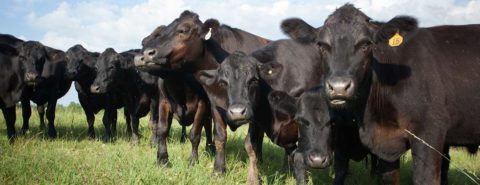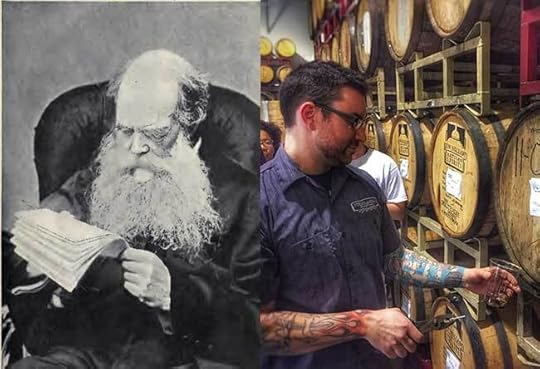Oxford University Press's Blog, page 76
June 15, 2022
An enslaved Alabama family and the question of generational wealth in the US

Wealthy Alabama cotton planter Samuel Townsend invited the attorney to his home in 1853, swearing him to secrecy. His elder brother Edmund had recently died, and the extensive litigation over Edmund’s estate had made it clear to Samuel that he needed an airtight will if he wanted to guarantee that his chosen heirs would inherit his fortune. With an estate worth more than $200,000 dollars in the 1850s, Samuel was the equivalent of a modern multimillionaire. He wanted to leave this estate to his children and his brother’s daughters when he died—an ordinary enough wish. The trouble was this: all of these children were enslaved.
Like countless white men across the antebellum South, the unmarried cotton planter Samuel and his brother Edmund both fathered children with enslaved women they owned on their vast plantations. In his will, Samuel wrote that he wanted his sons and daughters to be treated exactly as though they were “white children,” giving them their freedom and an immense inheritance when he died. That was easier said than done. Because the law of slavery in the United States declared all children of enslaved women to be slaves themselves, Samuel’s five sons, four daughters, and two nieces were legally his property, and property wasn’t supposed to inherit.
The attorney Samuel hired, however, did the nearly impossible, and in 1860—four years and two lawsuits after Samuel’s death in 1856—the old planter’s will was declared valid, making the Townsend children their enslaver’s rightful heirs. Over the following decades, the Townsends would traverse the country, searching for communities where they could exercise their newfound freedom and wealth to the fullest. Through the Civil War, Reconstruction, and the rise of Jim Crow, the Townsends’ money and mixed-race ancestry granted them opportunities unavailable to most other freedpeople. Disbursements from Samuel’s estate allowed the younger Townsends, both boys and girls, to attend Wilberforce University in southern Ohio; after fighting for the Union Army in Mississippi, one son took his inheritance to the Rocky Mountains, where he used it to start a business as a barber and engage in silver mining; other members of the family homesteaded on Kansas’s Great Plains, building new lives as farmers, teachers, journalists, and lawyers. Samuel’s son Thomas Townsend even returned to Alabama and purchased part of the old plantation where his family had been enslaved—the first time one of Samuel’s former slaves would own his former master’s land. Samuel Townsend’s estate was greatly devalued by the Civil War, but the surviving Townsend children would inherit around $5,000 each, more than $130,000 each in today’s currency. Though members of the family often faced prejudice in the communities where they made their homes, this capital gave the formerly enslaved Townsends room to pursue social and economic mobility in a hostile society.
Yet the fact that the Townsends had themselves once been enslaved didn’t make their inheritance any less problematic than if they had indeed been Samuel’s “white children.” The trust fund that the Townsends drew from throughout their lives had been built on enslaved labor—their own, their mothers’, and that of the nearly 200 other African Americans Samuel had held in bondage. When Samuel died and his property was put up for auction, his lawyer wrote that “the lands sold low” while “the negroes sold high,” meaning that most of the money the Townsends inherited came from the sale of other enslaved people, men and women without the dubious privilege of being their master’s children. Though it had radical implications for their future lives, perhaps the Townsends’ inheritance wasn’t all that radical of an act on Samuel’s part. Samuel Townsend hadn’t been motivated to emancipate his children by an abhorrence of slavery; he’d made his fortune on the backs of enslaved people. Samuel simply considered the enslaved Townsends superior to other African Americans, and therefore deserving of freedom, by merit of their blood relationship to him.
When Thomas Townsend purchased a piece of his father’s old plantation, it wasn’t an example of the large-scale land redistribution that freedpeople advocated after the Civil War. It was the transfer of wealth within one elite family, a centuries-old practice with consequences that reverberate into the present day. The descendants of white elites have had generations to build their wealth, in some cases wealth originally derived from slave labor. The descendants of enslaved people, who were largely denied land ownership during Reconstruction and excluded from economic advancement during Jim Crow, have not. It’s a form of opportunity theft that Ta-Nehisi Coates termed “the quiet plunder” in his 2014 article “The Case for Reparations.”
The Townsends’ story pushes us to imagine what America might look like if more enslaved people had benefited from the same sort of generational wealth that Samuel and Edmund’s children did, and that many white Americans still do today. If the promise of “forty acres and a mule” to former slaves had been honored by the federal government. If Thomas Townsend’s purchase of his father’s land in 1860s Alabama hadn’t been the exception, but the rule. Ultimately, the Townsends press us to ask a critical question for the present day: how do we make that imagined America a reality?
Featured photo by EVGENIY KONEV on Unsplash, public domain

June 13, 2022
Aduhelm and the politics of drug approval in the United States

One of my mentors, Dr Robert N. Butler, conducted research at The National Institutes of Health (NIH) in the 1950s that established that “senility” was not an inevitable consequence of aging, but was the result of disease. Later, as the founding director of the National Institute of Aging, he helped to make Alzheimer’s disease research a national priority. In the decades that followed, researchers have added to the relevant bench science and explored the economic and social consequences of Alzheimer’s disease and other forms of dementia. Before his death in 2010, Dr Butler argued that the twenty-first century should be the “century of the brain,” and he emphasized the devastating consequences of Alzheimer’s disease and other forms of dementia for patients, families, and society.
During the past several decades, the US Congress has authorized billions of dollars for Alzheimer’s disease research, but this has not yet led to a major breakthrough in the treatment. It is therefore understandable why there was a great deal of excitement about a new drug being developed by Biogen for the treatment of Alzheimer’s disease, aducanumab (Aduhelm). Yet, when the drug was approved under the US Food and Drug Administration’s (FDA’s) accelerated approval pathway in June 2021, it generated more controversy than celebration. The FDA’s own advisory committee voiced strong objections to Adhuhelm’s approval and, after the FDA announced its decision, three members of the committee resigned in protest. Dr Aaron Kesseheim, one of the members, called the approval of Aduhelm “probably the worst drug approval decision in recent US history.”
Why did the approval of a drug designed to treat Alzheimer’s generate so much disagreement and controversy?
First, there were significant concerns about the amount and quality of evidence the FDA used to make its decision. Among other things, the FDA allowed Biogen to skip the Phase 2 trial, so there was limited evidence about dosing going into the Phase 3 trial. Beyond that, the results of the Phase 3 trials were mixed and critics do not believe that they provided sufficient evidence about benefits to justify approval.
A second issue was whether the definition of “benefit” adopted by Biogen and the FDA was sufficient. As with many clinical trials during the past few decades, Aduhelm was approved based on evidence about changes to a surrogate measure, rather than a clinical endpoint, like improvement in memory. In the case of Aduhelm, the FDA relied heavily on measures of amyloid-beta plaque in the brain as the surrogate outcome measure. This is controversial because a growing number of scientists have questioned whether amyloid-beta plaque, which is associated with Alzheimer’s, causes the disease.
Third, critics argued that the FDA failed to give appropriate weight to the side effects of the drug, which include headaches, delirium, falls, and swelling or bleeding in the brain. Furthermore, the use of Aduhelm requires patients to undergo regular MRIs, which led to concerns about fair access to the treatment.
In the months since the initial FDA decision, several health insurance companies have decided that they will not cover Aduhelm. After conducting a “coverage with evidence” determination, the Center for Medicare and Medicaid Services (CMS) concluded that it would only cover the drug in the context of clinical trials. This is consistent with the decision CMS made almost 10 years ago, in 2013, about whether to cover PET scans designed to detect the presence of amyloid-beta plaque in the living brain. As in its Aduhelm decision, CMS decided that FDA approval was not sufficient to justify coverage by Medicare for routine treatment. In the 2013 case, CMS decided that it needed more information about whether information about the presence of amyloid-beta plaque would change clinical treatment. In the case of Aduhelm, CMS decided that it needed more information about whether the benefits of the drug outweighed its harms.
The debate over Aduhelm is interesting, but as I argue in my article in Public Policy & Aging Report, this is not an isolated case. For decades, Congress, with encouragement from industry and many patient groups, has pushed the FDA to speed its approval process. The push for faster approval and changing evidentiary standards is often caught up in larger political disputes about the role of regulation and interest group power dynamics. The regulation of emerging technologies will never be a purely scientific matter because it reflects underlying values about the kind of society we hope to create. Studying the Aduhelm case, and others like it, provide insights into how our existing institutions are shaping these choices.

June 11, 2022
Salvation on earth: “saviour” gods in Ancient Greece

At some point during the fourth century BC, an Athenian brought an offering to the shrine of Asclepius. His inscription reveals that he was “saved” from some “mighty rocks” and his marble relief depicts himself and his mules drawing a wagon and approaching the god (IG II/III3 4, 672). Was he injured in a landslide together with his animals, but restored to health by Asclepius? Far away from the Greek mainland, in Kollyda in Lydia, a married couple set up a marble altar to Zeus “for the safety (soteria) of themselves and their children” after two people (perhaps their acquaintances?) were struck dead by lightning (TAM V.1 360). They were not, as one might expect, praying for the “salvation” of the deceased, but their own self-preservation from the anger of the god.
These are just two examples among numerous dedications, scattered all over the Greek world, testifying to the saving power of the gods. From the late Archaic period (c. 700 BC) onwards, an impressive number of gods and goddesses in the Greek pantheon are attested under the title of “Saviour” (Soter and Soteira in Greek). These divinities oversaw the protection of individuals and cities and had the power to grant or withdraw an essential blessing―soteria, which can be variously translated as “deliverance,” “preservation,” and “safety.” But what did it mean to be “saved” in antiquity? In a polytheistic system where multiple gods and goddesses reigned, which ones did the Greeks turn to as their “saviour,” and how could the gods be persuaded to “save”?
The Greek concept of soteria had close and entangled relations with Christianity. The same Greek word is also used in Christian writings, not least the New Testament, to signify deliverance from the consequences of sin and attainment of a blessed afterlife through the mediation of Christ the Saviour. Yet as the above episodes show, the concept goes back to Greek antiquity, but its centrality in ancient Greek religion has long been obscured by its later importance in Christianity. It is tempting to assume that soteria was a predominantly Christian concern of little or no relevance to other religious traditions, or to project Christian notions of this concept retrospectively onto the Greek concept. Such misconceptions are commonplace in scholarship in the nineteenth and twentieth centuries. In fact, long before the rise of Christianity, soteria already had a central and significant role in the relationship between the ancient Greeks and their gods. It entailed a different experience or experiences from the one that we, after more than two millennia of Christian traditions, have come to associate with the term.
What roles, then, did the Greek “saviour” gods play in the life of the Greeks? How did worshippers search for soteria as they confronted the unknown and unknowable? Whether in normal circumstances or in times of need, the Greeks would approach their gods with prayers, sacrifices, and votive offerings praying for soteria. For Greek cities, this could concern deliverance from an external threat, safety from natural disasters, and preservation of their political constitutions. For individuals, this could be deliverance from war, safety at sea, recovery from illness, a smooth childbirth, economic security, and physical well-being more generally. It is interesting to note that the experiences covered by soteria overlap in fact with a lot of our own concerns in the modern day. However, this multivalent concept, with its range of meanings, remains surprisingly difficult to pin down and defies translation by any single English word. What is certain is that, despite the wide-ranging power of the Greek “saviour gods,” what they offered was limited to deliverance on earth: soteria for the Greeks had little or nothing to do with the afterlife.
Over time, the familiar Greek word soteria was adopted in Christianity but given a new, eschatological aspect not previously associated with it in Greek tradition. Despite this new promise, what is striking is that the earthly aspect continued to be important even in Christian soteria, that is, common ground existed between Greek and Christian concepts of soteria. Even after the legalization of Christianity in the Roman Empire, both pagans and Christians continued to use soteria in a this-worldly sense. So deeply ingrained is the earthly character of Greek soteria that salvation on earth remained part and parcel of the Christian notion of soteria. The remarkably stable and persistent character of soteria for almost a millennium testifies to how deeply rooted the concept was in Graeco-Roman culture, how widely shared the concerns were across different religious groups, and how central and fundamental this blessing was in any relationship between human beings and the divine.
Feature image: Gary Todd from Xinzheng, China, CC0, via Wikimedia Commons

June 9, 2022
Eurovision 2022 in tempore belli: voices of the people, protest, and peace

Months before the Grand Finale of the Eurovision Song Contest on 14 May 2022 in Turin, Italy, Ukraine was able to claim both moral and musical victory with its entry, the Kalush Orchestra’s “Stefania” (Stephanie). Together with the official videos of all other national entries, “Stefania” began circulating globally on multiple internet platforms in the early weeks of 2022, even as the threat of Russia’s military aggression against Ukraine intensified and then reached the full force of invasion on 24 February. As Europe itself entered a historical moment of violence, openly reminiscent of the Cold War’s division of the continent, “Stefania,” too, entered that moment, its lyrics transformed from a lullaby addressed to band member Oleh Psiuk’s mother to an anthem for Ukraine’s sovereignty as a nation. The song’s queered mix of hip-hop, folk song, and break-dancing rendered its meanings unequivocal, as mother became motherland, again and again in the refrain:
Stefania mother, mother Stefania,
The field blooms, and it turns gray.
Sing me a lullaby, mother.
I yearn to hear your mother tongue.
First appearing in the Eurovision Song Contest in 2003, Ukraine proved itself to be one of the most successful of all national contestants, consistently placing high and performing the winning song three times (2004, 2016, 2022). Ukraine’s presence was one of paradox and poetic politics, possessing always the power to transgress the official rules meant to prevent any expression of political position. During its twenty-year Eurovision history, Ukraine, nonetheless, had supported entries that were arguably the most overtly queer (Verka Serduchka, “Dancing Lasha Tumbai,” second place in 2007) and explicitly political (Jamala, “1944,” first place in 2016). Ukrainian entries addressed national political struggles and global crisis, and they did so by largely ignoring the long preference for songs in English. The first winning song in Ukrainian and the first winning song to employ hip-hop showed no restraint in its confrontation with Eurovision norms. It broke the rules in the name of a broken Europe.
Exceptional as “Stefania” was, musically and politically, Ukraine’s Kalush Orchestra did not stand alone in Turin. The Eurovision’s infrastructure of pitting nation against nation notwithstanding, the 40 competing nations and the millions of devoted Eurovision fans worldwide mustered vocal and moral support for Ukraine with remarkable solidarity. The official policy of the Eurovision’s sponsoring organization, the European Broadcasting Union (EBU), that politics be excluded from the competition, was sidestepped, even suspended, for example, when Russia was banned from Eurovision 2022 within two days of its invasion of Ukraine. Several nations more aligned with Russia’s aggressive military actions in Eastern Europe, notably Belarus and Hungary, chose not to compete. The 14 May Grand Finale itself symbolically located the Eurovision in the historical moment by orchestrating the arrival of audiences globally as a march on the streets of Turin, protesters lifting their voices in unison to sing “All We Are Saying Is Give Peace a Chance.” The Grand Finale, viewed live by an estimated 200 million, was making clear that it could call for and act with solidarity. This would be the Eurovision Song Contest in tempore belli, in the time of war.
There could be little doubt that the Eurovision, responding to a moment when war was dividing Europe with a violence unknown on the continent since World War II, had entered a new era. The transformation of excess and spectacle, trademarks of the Eurovision, already had a history, first emerging clearly in 2020, when the Grand Prix itself was canceled, but replaced by a 16 May program of intimate performances by the national entries, often in lockdown. Individually and collectively, the competitors, who had already been chosen at the national level, made clear that the coronavirus pandemic would be engaged seriously. The return of the Eurovision to Rotterdam in 2021 and its staging in Turin in 2022 heightened that seriousness more explicitly. That the performances should address a torn Europe in time of war with solidarity surprised few.
Enhancing the seriousness of a New Eurovision was the capacity of many performers to capture and enhance many themes from the Old Eurovision. The implicit LGBTQ+ politics historically underlying many Eurosongs had become explicit, further mobilizing aesthetic solidarity. Many songs made clear that the world had yet to move beyond the coronavirus pandemic with its existential challenges to physical and mental health. Broken life and broken love converge in the metaphoric stretto of the Greek entry, Amanda Georgiadis Tenfjord’s “Die Together.”
Representing the nation in song combined the national and the international, especially the European, in forms and styles both new and old. The traditionally cosmopolitan sound of cabaret and chanson, for example, translated musically for a European Lithuania, with borders shared by the Russian Federation, in the performance of Monica Liu:
The question of a post-Cold War Europe shaped by diversity loomed large at Eurovision 2022. In the history of the Eurovision Song Contest, linguistic diversity had never been greater. In previous competitions, a Lithuanian cabaret song would surely have been performed in French. The myth that “all Eurosongs are in English” was roundly debunked in Turin, where the 25 songs of the Grand Finale employed twelve languages, including vernacular dialects and regional languages (e.g., France’s Alvan and Ahez singing “Fulenn” in Breton).
The emerging post-2020 Eurovision has also not abandoned its commitment to song itself, in all its dimensions of craft and performative power. The level of songwriting and the qualities of voice and production were especially high in Turin, and it is important as the Eurovision turns toward the future that it retains its potential to draw audiences to a changing Europe with performances such as that by third-place finisher, Chanel, whose performance of “SloMo,” as singer and dancer, was the most riveting of the Grand Finale:
In the immediate aftermath of Eurovision 2022 it is not yet possible to know whether Eurovision 2023 will take place next May in Ukraine, realizing the longstanding tradition of staging the competition in the nation of the winner from the previous year. Ukrainians and Europeans alike are unified in their solidarity that the Eurovision Song Contest sustain that tradition, further realizing the New Eurovision as it moves beyond the time of war.

June 8, 2022
A “neat” etymology

For a change, this post will be devoted to a word of known etymology. But though the word is all but forgotten, it throws some light on the history of economy; hence its antiquarian attraction. The English noun neat, the main subject of the present blog post, means “cattle, oxen,” and every dictionary quite correctly calls it dialectal or archaic. Yet in the past, it and its relatives could be found all over the Germanic-speaking world. Outside English, they are still alive and kicking. Why “kicking” will become clear from the following exposition, if you have not guessed the answer from the above.
The noun neat has retained its ancient spelling (Old English nēat; the sign of length over e is mainly for our use), and it was monosyllabic even a thousand years ago. Only the pronunciation has changed in a regular, predictable way: ēa to ē and then to the modern long sound by the Great Vowel Shift. The verb having the same root was nēotan and meant “to make use, enjoy.” Later, it disappeared, supplanted by Romance borrowings, as often happened in Middle English: both use and enjoy are from Old French. But it is very much alive in the neighboring languages: German genießen, Icelandic njóta, and others. Gothic, a fourth-century Germanic language, had niutan “to attain, enjoy, obtain.”
Very little is known about the ancient root of nēotan, because its cognates have not been recorded in Sanskrit, Greek, or Latin. Therefore, we have no solid basis for comparison. Outside Germanic, only in the Baltic languages do we find closely related nouns, such as Lithuanian naudà “use, property” and Latvian naûda “money.” The status of the few Celtic forms, traditionally listed in dictionaries in connection with neat, is uncertain. Old Russian nuta “horned animal” (no modern reflexes in Standard Modern Russian) is, apparently, not related, because by the First Consonant Shift, regularly invoked in this blog, Germanic t cannot correspond to Slavic t (in Russian, as in Baltic, the match for Germanic t should be d). It is therefore commonly believed that the Russian word was borrowed from Germanic. Every time we run into such imports we wonder why people needed a foreign word if they had their own, and when, where, and under what circumstances contacts were so close as to justify the borrowing. We seldom have enough evidence for a convincing answer.
 The dawn of civilization and beyond.
The dawn of civilization and beyond.(Image via publicdomainpictures.net, public domain)
In any case, “use” and “enjoyment” are connected with “cattle” (hence of course, the earlier reference to kicking, with profuse apologies to those who despise puns as the lowest form of wit). What, we may ask, is the source of the connection? Most of our readers know the answer, but it so happens that my not too rich correspondence consists mainly of questions from students. The letters come to my email address, and I answer them privately (nowadays also by Zoom; some time ago, I had a long interview with an eighth-grader about the origin of swearwords: a perfectly unbuttoned conversation, full of smut and sound, though once I caught sight of the youngster’s grinning mother)—privately, because most of our readership may consider the information too trivial. However, one such recent question inspired today’s blog post, that is, I promised the student (this time, a college student) to devote a special post to her query.
In the history of our civilization, money and enjoyment are inextricably connected with cattle. We find Gothic skatts “(piece of) money,” Old Frisian skett “money” and “cattle,” and Russian skot “cattle.” Modern German Schatz means “treasure.” Once again, Russian skot cannot be a legitimate cognate of skatts for the reason given above: Germanic t does not match Slavic t. Either Germanic borrowed this word from Slavic or Slavic from Germanic (a familiar scenario), or both borrowed it from a third source. And once again, this incident need not detain us here. We only note that the same word may mean “money” and “cattle.” The way from “money” to “use” and “pleasure” is shorter than from “cattle” to “use” and needs no proof.
 Longing for a neat dress is human.
Longing for a neat dress is human.(Image by Jill Wellington from Pixabay, public domain)
In early societies, wealth was tantamount to having numerous herds. Not only nomads driving their horses from one pasture to another equated cattle with riches. It was so in antiquity and so in the European Middle Ages. In medieval Iceland, as the sagas tell us, sheep and pasturing (and feuds connected with them!) played an outstanding role. The best-known linguistic example dealing with the history of such words is Latin pecus “cattle,” alongside pecunia “money” and the related adjective pecuniarius, originally “rich in cattle,” that is, simply “rich.” (Money is a Romance word.) English pecuniary “pertaining to money” is a sixteenth-century bookish borrowing from Latin. Since by the First Consonant Shift, Germanic f should correspond to non-Germanic p (as in English father and ford versus Latin pater and port), it does not come as a surprise that English fee, though by devious ways, also corresponds to Latin pecus (this noun traveled from Germanic to Romance and back to English). Close to pecuniary is peculiar. The Latin adjective peculiaris meant “not (!) held in common with others.”
Now briefly back to Gothic niutan “to enjoy, obtain.” The Modern German verb (ge)nießen still means “to enjoy” (ge– is a prefix), and another related word, better known outside the German-speaking world, is Genosse “comrade,” originally either “someone who has as many cattle” or “a person with whom one shares his or her cattle.” And of course, we always love and enjoy the society of Comrade So-and-So and all our comrades, don’t we? The word fellow has a similar history. Late Old English borrowed it from Old Norse, in which félagi was a compound made up of fé “property” and lagi “something laid,” primarily, “one who lays down money in a joint undertaking” (today, Icelandic félagi means “society”).
 A sidekick has many dimensions.
A sidekick has many dimensions.(Photo by Richard Brutyo on Unsplash, public domain)
This is the main story, but it needs a sidekick. English has the adjective neat “elegant, dainty, tidy.” In the present blog post, its history deserves some attention because homonyms always invite questions about etymology. This neat has nothing to do with cattle. It is a borrowing from Old French, eventually from Latin. Latin nidus meant “shining, clean,” and in the sixteenth century, English neat also meant “clean, clear.” I cannot help quoting a sentence I found on the Internet: “In 1910, there were 495,000 neat cattle.” No, those horses and the rest were not “neat.” The adjective neat is practically the same word as net “free from deduction” (as in net income; no connection with fishing nets). The word in this form is known almost all over the world. But it is kind of neat to find a sentence about 495,000 neat cattle. The person who wrote it had no idea of the inherent pun, but we are now aware of the unintended and unconscious joke, which shows once more that puns are not necessarily the lowest form of wit and that they may become a source of joy and enjoyment.
Featured image by christophoto from PxHere, CC0 public domain

June 5, 2022
Off with their prefixes

I was teaching the history of the English Language and had just mentioned that, following the English Civil War, Charles I had been convicted of treason and beheaded.
A question came from the back of the classroom: “Why do we say beheaded and decapitated, not the other way around?”
I said that I wasn’t sure, but suspected that it was because be- and head were Anglo-Saxon forms and de- and capit were Latin forms. Anglo-Saxon prefixes tended to go with Anglo-Saxon roots and Latin prefixes with Latin roots, I speculated, dangling a research project for someone.
No one took me up on that, but try as I might, I couldn’t get the be- and de- question out of my head. Be- was especially puzzling because it has such a wide range of meanings and uses. In some words, be- indicates loss, as in bereaved, bereft, and behead. But more often be- can hint at creation or causation, as in beget, betroth, bedevil, belittle, begone, become, befuddle, befriend, and bewilder. Or it can refer to things that have been caused—or just happened—to excess (like bejeweled, bedazzled, bespattered). And it can note position (beneath, beside, beyond, below, and the old-timey betwixt). Sometimes the contribution of be- is subtle. What is the difference between moan and bemoan, stir and bestir, loved and beloved?
Time has separated the meanings of some be- words from their roots (stow and bestow, night and benighted) and some have roots no longer used with that meaning (like berate, from Middle English rate, meaning “scold”).
If you look in a dictionary, you’ll find close to a hundred be- words, from becalm and because to bewitch and beyond. Many combine be- with an Anglo-Saxon word but not all do. There is bespectacled, combining be- with a word from Latin. And new be- words are still coming, like beGoogled.
Decapitation seems to be a more clinical expression than behead, as befits its French and Latinate roots, and naturally it entered the language later: the Oxford English Dictionary gives a first citation from 1611. The meaning of the prefix de- seems to be regularly associated with the ideas of “off” and “away.” We find words like de-escalate, decaffeinate, decertify, deflate, depress, detoxify, denude, demoralize, decompose, deprioritize, deglaze, and deregulate, where the semantics are fairly obvious. Deceive (“to hide away the truth”) requires a bit of thought. Others are tricky: derive is not from de-arrive as one might casually hope, but from French dériver, referring to a ship’s drift and also to the overflowing of a river.
Like be-, de- is still a productive element. The twentieth century brought us de-Nazification after World War II, de-Stalinization in the 1950s, Deconstruction in literary theory, Deconstructivism in architecture, and desilofication in data management.
To me, the de- words convey a technocratic tone you don’t find in the be- coinages. That leads to a final question: are behead and decapitate synonyms? For behead, Merriam Webster gives “to cut off the head of, decapitate” and for decapitate we find “to cut off the head of, behead.” While the two are close, the synonymy is not complete. A beheading seems always intentional (combining the causative and away-from senses of be-) and it invokes images of medieval swords and axes. Decapitation can be accidental, the result of a botched hanging, an industrial or vehicular mishap, or even a shark or crocodile attack. And it is more likely to be applied non-human victims or extended metaphorically: an organization made leaderless might be described as decapitated but probably not as beheaded.
Beheading, with its Anglo-Saxon feel of swords and axes fits English history, whose headless parade of notables includes not just Charles I but Anne Boleyn, Mary Stuart, Sir Walter Raleigh, and Oliver Cromwell—the last posthumously beheaded at the order of Charles II.
Featured image: “Triple portrait of Charles I, King of England, Scotland and Ireland from three angles.” by Anthony van Dyck. Public Domain via Wikimedia Commons.

June 2, 2022
The versatility of hydrogen: storable, portable, and renewable

Hydrogen has long been a mainstay in industry and is an important component in refining, ammonia production, and methanol production. Of the 10 million metric tonnes (MMT) produced in the US in 2020, about 70% was used by refineries and 22% for ammonia production. For the same year, the world produced 90 MMT, with 44% going to refineries and 38% for ammonia production. The remaining amounts were used in methanol production, steel production, feed processing, and treating metals.
Hydrogen is becoming a more versatile fuel, however, and is receiving interest in energy storage, as a transportation fuel, as a fuel for electricity generation, and as a fuel for heating. Renewables such as solar photovoltaics (PV) and wind have variable output, so hydrogen is one option for storing electrical energy from renewables to better match production and demand. In addition, the hydrogen made from renewables could be transported from regions with abundant solar PV and wind to large cities for subsequent use. Such means of transportation include sending it as a gas via pipeline or converting it to liquid form and transporting by truck or ship.
The transportation marketThe US government started the Freedom Car Fuel Partnership in 2006 to study the use of hydrogen as a transportation fuel. The goal was to transform the transportation market to one using hydrogen fuel cell vehicles (FCVs). If the hydrogen is produced from renewable energy, the overall CO2 emissions will be quite small. An FCV is as much as three times more efficient than a gasoline vehicle, so a higher percentage of the energy in hydrogen is used relative to gasoline. Compared to battery electric vehicles (BEVs), hydrogen FCVs allow a refueling time similar to gasoline, thus avoiding the long charging times common with BEVs.
“Hydrogen made from renewables could be transported from regions with abundant solar photovoltaics and wind to large cities.”
The US program has not rapidly advanced, however, as there are less than 50 hydrogen fueling stations in the US (mostly in California) which, along vehicle costs, have limited the transition to a hydrogen transportation economy. At the end of 2021, the US had less than 13,000 hydrogen FCVs in service. In spite of the slow development in the US, Denmark has an energy plan to establish a nationwide hydrogen infrastructure with a goal of being independent of fossil fuels by 2050. The plan is to produce hydrogen using wind energy, both onshore and offshore, and solar PV. Time will tell whether Europe is more committed to hydrogen FCVs than the US, and how BEVs and FCVs will compete in a transition from fossil fuels.
Electricity and heatingAs a fuel for electricity generation, hydrogen can be used with oxygen in a fuel cell to produce electricity and water. Hydrogen can also be blended with natural gas, thereby using a blended fuel mixture in a natural gas turbine, with an overall a reduction of CO2 emissions. Hydrogen can also be used for heating. While the use of pure hydrogen would require considerable alteration or replacement of existing home and industrial heating infrastructure that uses natural gas, hydrogen can be blended with natural gas up to concentrations around 20% without changes to the infrastructure.
Producing hydrogenDemand for hydrogen, which has grown more than threefold since 1975, is still mostly produced from fossil fuels. Of the 10 MMT produced in the US, 95% is from natural gas (methane), 4% from coal gasification, and 1% from electrolysis. For worldwide production of hydrogen, 76% is from natural gas, 22% from coal gasification, and 2% from electrolysis.
“A hydrogen fuel cell vehicle is as much as three times more efficient than a gasoline vehicle.”
Significant amounts of hydrogen do not exist in pure form but there are great quantities available in different chemical compounds, especially natural gas, coal, biomass, and water. Therefore, hydrogen, unlike fossil fuels, is not an energy source but rather an energy carrier. It can be produced in a variety of ways and it is now common to assign a color code based on the source of the hydrogen and the relative amount of CO2 made during production. For example, the majority of hydrogen in the US is produced via natural gas reforming, a reaction of natural gas and steam to make synthesis gas, a mixture of hydrogen, carbon monoxide (CO), and CO2. In this case the hydrogen is referred to as “grey” hydrogen. If the hydrogen is produced from coal or biomass via gasification, such that oxygen is used to convert the fossil fuel into CO, hydrogen, and CO2, it is referred to as “black” hydrogen. Reforming and gasification produce large amounts of CO2 and if these processes are coupled with carbon capture and sequestration (CCS), such that the CO2 is captured and transported to a geological formation for permanent storage, it is referred to as “blue” hydrogen. “Green” hydrogen is produced from electrolysis of water using electricity from only renewable energy types, such as wind, solar, and hydroelectric. If, instead, nuclear energy is used to provide energy for the electrolysis it is referred to as “pink” hydrogen.
In conclusion, the use of hydrogen for storing energy, as a transportation fuel, to generate electricity, and for heating could greatly expand hydrogen demand, adding to the existing industrial uses in refining and ammonia production, as well as a variety of other applications.
Featured image by Jeremy Bishop on Unsplash, public domain

June 1, 2022
“Never say die” and dictionaries for the living

Last week, I promised to write something about idioms in dictionaries and on that note finish my discussion of English set phrases (unless there are questions, suggestions, or vociferous cries for more). Where do you find the origin and, if necessary, the meaning of never say die, never mind, and other phrases of this type? Should you look them up under never, say, die, or mind? Will they be there? And who was the first to say those memorable phrases? Nowadays, people search for answers on the Internet, but the Internet does not generate knowledge: it only summarizes the available information and various opinions. We also wonder: Is never say die an idiom? Never mind probably is.
The oldest genres of idioms are proverbs (a friend in need is a friend indeed) and so-called familiar quotations(more in sorrow than in anger), neither of which has been at the center of my interest. The Greeks and espeiclly the Romans produced memorable phrases the moment they began to speak. Life is short, art is long. Good friends cannot be bought. A water drop hollows a stone. As long as I breathe, I have hope. How true! Excellent dictionaries of such phrases (“familiar quotations”) exist, but, as I have noted, not they will concern us today. We are returning to the likes of the phrases I have cited more than once: to kick the bucket, in apple-pie order, to go woolgathering, not room enough to swing a cat, mad as a hatter, and so forth. Dictionaries of idiomatic phrases are many. The best of them explain the meaning of such outwardly incomprehensible locutions, sometimes quote the books in which they occur, and explain their origin if something is known about that subject, but most focus on meaning and usage.
 Not everybody goes woolgathering.
Not everybody goes woolgathering.(Image by M W from Pixabay, public domain)
General (all-purpose) dictionaries like Webster’s and the OED include set phrases as a matter of course, but, though they offer the user the etymology of words (even if all they can say is “origin unknown”) idioms often remain without any historical notes. My prospective dictionary, though a rather thick book, contains slightly more than a thousand idioms (a drop—a pretty heavy drop— in the bucket, or, as they say in German, a drop on a hot stone), but its purpose is to sift through all the existing conjectures about the origin of each item and support, if possible, the most reasonable one. Its main merit is the critique of multifarious conjectures, some of which are excellent, and some are downright stupid. As I said in the previous post, no etymological algebra is needed here. Try to find out whether hatters were ever mad, who tried to swing a cat and failed for want of space, what apple-pie order means, why we should mind our p’s and q’s, and the riddle will be solved.
I’ll begin my rundown on the sources with the most recent one known to me. Allen’s Dictionary of English Phrases (Penguin, 2006; its author is Robert Allen) is comprehensive and reliable. Though etymology was not Allen’s main objective, he never neglected it, and, in discussing conflicting hypotheses, showed excellent judgment. He mined the riches of the OED and many other sources, while I mainly followed journal publications for four centuries and cited dictionaries as an afterthought. (Allen also occasionally used Notes and Queries, my main source of inspiration.) While I am on the letter A, I should mention G. L. Apperson, the author of the book English Proverbs and Proverbial Phrases (London: Dent, 1929). Apperson was an outstanding specialist, and his book is a joy to read.
 More than enough room to swing a cat.
More than enough room to swing a cat.(Image by Veronica Kaiser from Pixabay, public domain)
Perhaps the most famous and also the thickest book in this area was written by E. Cobham Brewer. His Dictionary of [Modern] Phrase and Fable (1894, a drastically revised version of the book first published in 1870) is the only one of his many once popular works that has not gone with the wind. A copy of it was on “every gentleman’s desk,” as they used to say at that time. Anyone who sought information about “phrase and fable” consulted Brewer. A learned man, he did one unforgivable thing: he explained the origin of idioms without referring to his sources. Many of the explanations are reasonable, but as many are unacceptable. The latest, severely abridged edition appeared in 2011. The information in even this volume should be treated with caution, but the editors had no choice, because the flavor of the original work had to be preserved.
Brewer’s competitor, but on an incomparably more modest scale, was Eliezer Edwards, the author of Words, Facts, and Phrases: A Dictionary of Curious, Quaint, and Out-of-the Way Matters (London: Chatto and Windus, 1882). Not much in that collection is quaint, and even less is out of the way, but nothing works like an attractive title. The dictionary was much used, but it never enjoyed the popularity of Brewer’s magnum opus. At that time, people appreciated miscellanies containing heterogeneous “nuggets of knowledge.” This book, like Brewer’s, is dogmatic: Edwards gave no references in support of his derivations: he explained the origin of idioms as he saw fit.
Among the reference books published before the Second World War two should be mentioned. 1) Albert M. Hyamson, A Dictionary of English Phrases…. (London: Routledge, New York: Dutton, 1922.) The corpus is huge, but the etymologies are not always reliable for the same familiar reason: the user rarely knows whether the explanations are the author’s or common knowledge, or borrowed from some of the dictionaries he referred to. The uncritical approach to etymology is the main drawback of this genre. 2) Alfred H. Holt, Phrase Origins: A Study of Familiar Expressions. (New York: Thomas Y. Crowell, 1936.) Despite its title, this work contains numerous entries on individual words. The book can still be recommended because of its cautious approach to the material. Holt used various sources, and when he ventured his own hypotheses, he always said so.
 Not every brewer searches for words and phrases.
Not every brewer searches for words and phrases.(Image, left: E. Cobham Brewer via Wikimedia Commons; right Beer sommelier at work at Nebraska Brewing Company, via Wikimedia Commons)
An often-used collection is a three-volume book by William and Mary Morris, Dictionary of Word and Phrase Origins. (New York: Harper and Row, 1962-1971.) William Morris was the Editor-in-Chief of the first edition of The American Heritage Dictionary of the English Language, but the dictionary of word and phrase origins can hardly be called a success, because many explanations are unreliable, and the references to the authors’ sources are very few. A more rewarding fruit of teamwork is Dictionary of Idioms and Their Origins by Roger and Lina Flavell (Kyle Cathie, 1992). The origins are explained without reference to the sources, but most of them are acceptable. Last but not least, mention should be made of Charles Earl Funks’s Curious Word Origins, Sayings & Expressions from White Elephant to Song and Dance. (New York: Galahad Books, 1993.) The huge volume (988 pages, with excellent illustrations strewn generously all over the text) includes the author’s three earlier books: A Hog on Ice, Heaven to Betsy!, and Horsefeathers. The second part is only about words, but the first and the third deal with idioms. Some entries are quite detailed.
It will be only fair to mention the three collections that were especially often consulted in the past. They are John Ray, A Compleat (sic) Collection of English Proverbs (1678), George Bohn’s (1796-1864), A Handbook of Proverbs by John Ray, a radical reworking of Ray’s pioneering work, and English Proverbs and Proverbial Phrases by W. Carew Hazlitt (1834-1913).
The list at my disposal is very long, and reproducing most or the whole of it might only bore our readers. The fragment presented above gives an adequate idea of the state of the art, and those who are interested in the study of idioms may “make a note of it,” as Captain Cuttle, a memorable character in Dickens’s novel Dombey and Son (1846-1848) used to say. His favorite phrase—”When found, make a note of it”—was chosen as the motto of the British periodical Notes and Queries, which began to appear in 1849 and turned out to be a treasure house of letters on all things under the sun, including the origin of English words and idioms.
Featured image by Dan Parsons via Wikimedia Commons, public domain

Who is Putin fighting against?

The Russian invasion of Ukraine has highlighted a curious disconnect between the supposed ideological objective of the war and the means used to achieve it. In Russian official discourse of the late Putin era, Ukrainians are seen as part of the Russian people rather than a separate ethnic group. They are to be “liberated” from the small group of “Nazi” nationalists currently ruling Ukraine, itself an artificial entity that was created on lands torn away from Russia. According to this bizarre scenario, Ukrainians eagerly awaited “liberation” and would welcome the Russian troops with flowers. In this picture, the war is a family affair, not unlike saving a wayward younger brother from the influence of a street gang.
However, the Kremlin is conducting its military campaign in Ukraine as anything but a family matter. The level of violence against Ukrainian civilians is extraordinary; Western political leaders now speak of genocide. Many observers have also noticed the disproportionate presence in Ukraine of troops recruited in Russia’s North Caucasus (Chechnya and Dagestan), as well as distant regions in Asia (Tuva), troops which have little in common ethnically or culturally with Russians, let alone Ukrainians. Their loyalty to Russia is based on their regional leaders’ relationships with Putin, but they are not fighting for the same Russia whose troops Ukrainians were expected to welcome because of their alleged ethnic and religious unity with the Russians. It is, in fact, a Russian empire.
Russia—nation state or empire?In the previous incarnation of Russia’s empire, it specifically recruited the mountaineers of the North Caucasus to strike fear into the hearts of the tsar’s enemies in World War I. Known semi-officially as the “Savage Division,” this unit was seen as so valuable that Tsar Nicholas II’s brother, Grand Duke Michael, was appointed its commander. Just fifty years earlier, North Caucasian mountaineers put up a glorious fight against the Russian colonizers, but in 1914 they became the crown jewel of the imperial army. By contrast, there could be no Ukrainian units in the Russian army before 1917 because the tsars, just like Putin, refused to see Ukrainians as separate from Russians.
“Russia still has not resolved the fundamental tension between the two facets of its national identity—that of a Russian nation-state and a Russian-led empire.”
There are some important historical lessons here for our understanding of the present Russo-Ukrainian war. First, Russia still has not resolved the fundamental tension between the two facets of its national identity—that of a Russian nation-state and a Russian-led empire . A modern Russian nation failed to develop either under the tsars or under the Bolshevik commissars. Both regimes suppressed civil society, just as the Putin administration does today.
Second, a sovereign Ukraine threatens both aspects of the Russian identity. By becoming an independent state in 1991 and subsequently refusing to place itself within the Russian sphere of influence, Ukraine challenged the vision of Russia as an empire. But it also defied the notion of Russia as a nation-state by showing the strength of the Ukrainian ethnic identity and, above all, the inclusive political identity that developed after the two democratic revolutions in 2004–5 and 2013–14. This political identity included Ukraine’s national minorities, and the early Russian setbacks in this war have demonstrated that the majority of ethnic Russians living in Ukraine identify with it.
The Putin regime applies an unusual definition of “compatriots” in neighbouring countries. They are not just Russians by ethnicity as established during censuses and, in Soviet times, indicated on internal IDs. They are also Russophones, culturally Russian people of other ethnicities. Of all the Soviet Union’s republics, Ukraine had the highest number of those, and not by accident. During various periods the tsarist regime had banned all publications in the Ukrainian language and tried to stamp out any Ukrainian cultural presence beyond folk songs and peasant customs. Except for a brief period in the 1920s, the Soviet Union also encouraged, especially among Ukrainians, assimilation into Russian culture. It is thus, once again, the “imperial” notion of Russianness that the Kremlin is applying when it considers all Russophones compatriots.
Putin and the “Nazis”Who, then, are the “Nazis” whom Putin wants to destroy in Ukraine? In the postwar Soviet Union, any Ukrainian speaker in an urban setting risked being called a Nazi because Soviet propaganda had tried to connect all Ukrainian patriots to the groups collaborating with the German administration during World War II. Given the many connections between Stalinist ideology and that of Putin’s Russia, one might expect to see some marginal right-wing Ukrainian nationalists as Russia’s target in Ukraine. Instead, the “Nazis” are the multiethnic and often Russophone officials of the democratic Ukrainian state led by its Jewish president, Volodymyr Zelensky.
The answer, then, must be found not only in Ukraine’s resistance to empire and forcible inclusion in the Russian ethnos, but also to the political authoritarianism that underpins it.
“Ukrainians are neither part of the Russian people nor of the Russian empire, and any Russian road to democracy will need to begin from this acknowledgement.”
Millions of ordinary Ukrainians of various ethnic backgrounds participated in the two recent Ukrainian revolutions. They fought for the notions of democracy and rule of law represented by the slogan “Europe.” They also rejected “Russia” as a geopolitical choice, not just because of the imperial past, but also because of Putin’s Stalinesque regime. Because the West supported them—sometimes belatedly and with reservations—the Russian media has created a delusional construct of a “pro-Nazi” West aligning with the Ukrainian “Nazis” in a new world war.
Russia is not just fighting against the West in Ukraine while presenting democracy as Nazism. It is also fighting against its own citizens, those who in 2011 protested against Putin’s continued rule in what he saw as a Ukraine-inspired revolution, as well as those few who dared to protest the invasion of Ukraine in 2022. A war fueled by ethnic nationalism or imperial ambition would have been bad enough, but a war on democracy can only escalate the level of violence that Putin needs in order to remain in power.
Ukrainians are neither part of the Russian people nor of the Russian empire, and any Russian road to democracy will need to begin from this acknowledgement. Russian atrocities in Ukraine have destroyed any remaining sense of cultural closeness. Ukrainians have chosen another family, that of democratic nations. It is a war of a political regime identifying with the past against a multiethnic civil society representing the future. One needs to know history in order to understand this war, but one does not need to be a historian to know that Putin will fail.
Read a free chapter from Ukraine: What Everyone Needs to Know® on “Land and the People.”
Featured image by Daniele Franchi on Unsplash, public domain

May 31, 2022
Oxford World English Symposium 2022 recap [podcast]

With over 1 billion speakers—and that’s a conservative estimate—English is an incredibly diverse language. Dozens of countries around the world have their own varieties, many of which have not historically seen adequate representation in English dictionaries.
This past April, the Oxford English Dictionary hosted the Oxford World English Symposium 2022, a two-day event featuring a series of parallel sessions and panels on topics relating not only to varieties of English, but language prejudice, colonialism, and context-based English language teaching, among others.
On today’s episode, we’re featuring Lisa Lim, Phillip Louw, and Michael Proffitt, three of the Symposium’s participants, in the form of a follow-up panel hosted by Dr Danica Salazar, World English Executive Editor for Oxford Languages.
Check out Episode 72 of The Oxford Comment and subscribe to The Oxford Comment podcast through your favourite podcast app to listen to the latest insights from our expert authors.
Oxford Academic (OUP) · Oxford World English Symposium 2022 Recap – Episode 72 – The Oxford CommentFeatured image: @anniespratt, CC0 via Unsplash.

Oxford University Press's Blog
- Oxford University Press's profile
- 238 followers



